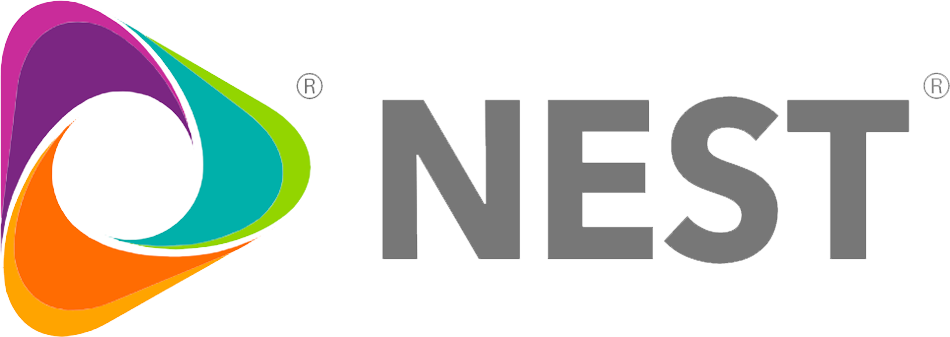Adding work order management software (WOMS) to your organization’s operations or upgrading an existing system is a complex undertaking. To ensure you have the information you need to make the right decisions about WOMS for your business, we’ve created this comprehensive guide. Take a look.
What Is Work Order Management Software?
Why Should Businesses Use Work Order Management Software?
What Other Functionalities Should You Consider?
What Does Work Order Management Software Cost?
How Do I Measure Work Order Management Software Performance?

First, What’s a Work Order?
A work order is a document (digital or hard copy) describing a maintenance task or project for a piece of equipment, facility, or property. It typically includes instructions, required materials and labor, and documents task stages as they are completed. (See “What Are the Most Common Categories of Maintenance Work Orders?” for more detail.)
Nearly all organizations have assets that require maintenance, but some may not have the volume or complexity of care needs that lend themselves to using work orders.
Organizations that commonly use work orders in their facilities management (FM) programs include those in manufacturing, heavy industry, retail, healthcare, arts, entertainment, recreation, and hospitality一just to name a few.
Historically, work orders have been written and updated by hand (via written form or spreadsheet), with the work order moving from management to technician to parts provider and back again as the task moved to close out.
While using work orders helps manage multitudes of maintenance tasks simultaneously, the process of manual updates can be onerous, time consuming, and error-prone, if not impossible, for large, multi-site organizations.

What Is Work Order Management Software?
In its simplest form, work order management software (WOMS) is a technology platform organizations use to initiate work order requests and manage work order tracking. The software can be computer- or cloud-based, though most are cloud-based and range in number and type of functionality.
Some features may be industry specific. For example, a business with many team members working in the field, such as property maintenance, might include GPS and vehicle tracking functionalities as part of its WOMS.
Computerized Maintenance Management Software (CMMS) is a more comprehensive form of cloud-based WOMS that includes various functionalities and databases to manage and store asset histories and inventories, enable communication, and integrate with other organizational departments to access and share data.
We’ll use the term “work order management software” to cover the range of software products available, including CMMS systems.

Why Should Businesses Use Work Order Management Software?
FM is often the second or third largest expense for many multi-site businesses一up to 10 to 25 percent of total indirect spending, according to global management consulting firm McKinsey & Company一which can make it a popular target for cost-cutting.
However, using the right work order management software can empower your FM team to do more with less, identify cost savings, and help mitigate those budget haircuts.
And while technology can be a nominally higher cost item, a quality WOMS platform一the workhorse of any modern FM program一can pay for itself many times over. For example, using a WOMS can help:
- Streamline Workflows. From initial stages through completion, work orders can be automated. In addition, service providers and internal team members can update work order status and request or relay data from the field. No need to call, text, or stop work for a face-to-face meeting.
- Access Data Faster. WOMS enables multiple stakeholders to obtain information in real time. In addition to work order status updates, some WOMS enables users to access repair notes, asset history, comments, and warranty data from anywhere.
- Increase Collaboration. When communicating is easier, people tend to do it more. WOMS enables multiple users to follow work order status and contribute in real time, as needed. No need to wait for a colleague to call in or return to the office to get their input.
- Reduce Equipment & Facility Downtime. Streamlined workflows mean less downtime for maintenance and repairs and less lost foot traffic and revenue.
- Optimize Resource Allocation. Knowing where your team is and what they’re working on at all times enables FM managers to better allocate resources across the fleet.
- Improve Reporting. Comprehensive data storage and retrieval enables your team to increase its visibility into program performance. KPIs, such as time to completion, failure rates, and first-time repairs, are more easily tracked. Worrisome trends can be curtailed sooner, and opportunities for increased efficiencies and cost savings can be implemented earlier.
- Enhance the Strategic Value of an FM Program. When your team can execute day-to-day tactical jobs more efficiently, that frees up resources to address higher-order, more strategic initiatives.

What Other Functionalities Should You Consider?
Some of the more popular add-ons一more commonly found with a CMMS system一include the following:
- Mobile App. Mobile access to the work order management platform enables users and other stakeholders to carry out work orders or review information from anywhere, at any time. For example, work orders can be initiated from the field and approved from the office. In short, a mobile app is almost a must have for businesses with distributed facilities. For more on WOMS with mobile functionality, see “Why Your Work Order Management Software Needs to Mobile.”
- Automated Scheduling. Today’s facilities management programs depend on robust and regular preventative maintenance (PM) plans. They can assist in extending the useful lives of assets and facilities and keep your cap ex budget in check. Automating scheduling helps ensure your PM stays up to date and backlogs are minimized.
- Asset History. WOMS that stores asset history improves operational efficiencies and reduces disruptions. When maintenance records, photos, notes, warranty, and depreciation data are available in the field, problem diagnosis, resolution, and record updating can happen more quickly.
- Automatic Invoicing. Automated invoicing can save significant time for service providers and others. Once a work order is initiated, an invoice, including coding and purchase order match, can be easily generated for review and approval.
- Access Control. Security is a concern when hundreds of stakeholders use a shared WOMS platform. Permission management limits users' access to required facilities, equipment, or other assets.
- Customized Reporting. Different businesses track different KPIs. Select WOMS platforms can accommodate unique report customization needs, saving considerable time and resources.
- Integrations. Integrating your work order management software with existing enterprise resource planning (ERP) and other business systems will increase the value of your data and WOMS. FM impacts everything from employee satisfaction to the customer experience, and FM data can help inform strategic decision making at the highest levels.
- Data Security. Your data is one of your organization’s most valuable assets, and as with other sensitive business information, your FM data should be secure at all times. WOMS can vary on this point, so it’s best to ensure you have the option to access the most appropriate and up-to-date security protocols available.

What Does Work Order Management Software Cost?
Many WOMS platforms use a subscription pricing model and charge per user, site location, work order, or a combination of factors. Subscriptions are usually billed monthly, annually, or multi-annually. Software is typically SaaS-based (Software-as-a-Service), hosted on the provider’s servers, and accessed through the internet.
WOMS vendors often don’t share pricing upfront, though indicative pricing varies widely. For example, monthly fees per user can range from $20/month to $100/month or higher, depending on the number of work orders permitted per month, supplemental features and customizations, and customer support levels offered.
WOMS providers often charge selected users, including external service providers, “tech fees” to access their software. Ostensibly, this is to subsidize the platform provider’s cost of ongoing technology development. However, service providers will typically pass on these costs to clients, making businesses pay twice for external team members to use the platform.
Free plans are also available, but functionality and monthly work order volume are usually limited一sometimes to only two or three repeating work orders per month. In short, while several providers offer free trials, most free WOMS plans are insufficient to meet most organizations' needs.
In general, pricing should be considered within the context of the level of functionality required for your business. While you may be tempted to opt for the less expensive option, make sure it meets your current and near future needs first. There’s no point in implementing a software package that will need to be upgraded three years down the road.

How Do I Measure Work Order Management Software Performance?
A top-quality work order management system can provide enhanced visibility into an FM program, enabling users to tighten up operations and optimize spending over time. To help determine if a WOMS is adding value, consider exploring performance across a selection of KPIs. Here are a few to start with:
- Work Orders. Track the total number of active, scheduled, and completed work orders and the average time to complete a work order.
- Work Order Backlogs. Is deferred maintenance on the increase or decrease?
- Asset Health. Track reactive service requests by asset, time spent on reactive maintenance, and first trip percentage一the rate of reactive work orders resolved with a single service visit.
- Percentage of Spend by Category & Time Period. Identify trends and exceptions and budget smarter by anticipating when spend levels will change throughout the year.
- Spend Gap Analysis. Compare year-over-year program spend by category or location, and make real-time adjustments as needed.

What Are the Downsides to Work Order Management Software?
The most common “downsides'' to WOMS are cost, implementation, and usage. But these are actually misconceptions. For example:
- Is WOMS too expensive? No. Going without a WOMS will save money in the short run. However, as with many other industries, data insights will drive program performance in the long run. Lost efficiencies in operations and spend management一which can have organizational impact一will ultimately cost more.
- Is a WOMS too difficult to implement? No, not with the right partner. Transitioning to a new tech platform is never easy, but with the right system and provider, the rollout and onboarding can be efficient and reasonably quick.
- Will implementing a WOMS lead to job losses? No. With a WOMS in place, many FM professionals will find their responsibilities increase, as they can do more in less time and with fewer resources.

How Do I Pick The Right Work Order Management Software?
Ensuring you select the right work order management software requires understanding your organization's needs.
For example, will multiple stakeholders be using the system simultaneously? Is mobile access important for users in the field? Should it easily integrate with existing business systems? How much customization of data capture and reporting will you require? Other considerations might include whether you have the support of senior management and, of course, your organization’s WOMS budget.
Next, form an in-house selection committee that includes a range of user types. Develop and finalize your selection criteria. Then, do as comprehensive a research process as is reasonable.
Ask others in your industry what WOMS they use and why. Reach out to industry trade associations for recommendations, and explore product review sites and user reviews. Develop a list of potential vendors and take full advantage of free demos. Your final recommendation or selection should reflect an optimal balance across fit, functionality, ease of use, security, and price.
Ready To Get Started?
Contact NEST today to learn more about our work order management software Facilitate一part of our industry-leading integrated Facilities management solution一designed to help better manage your FM program and transform your business for the future.
Contact Us Today
